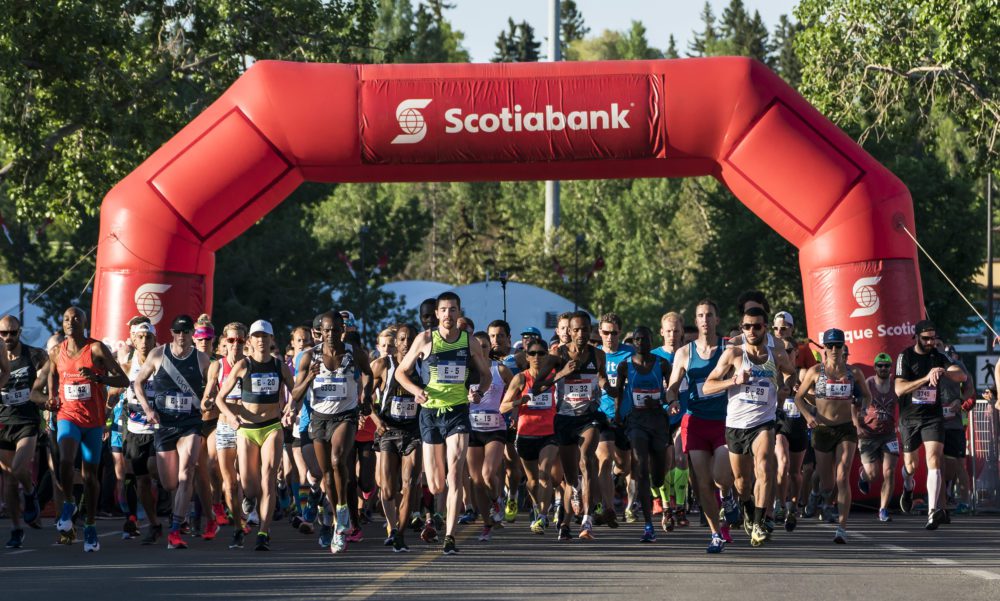Training advice for the time-crunched runner
Are you struggling to find the hours in a day to fit in your training? Here are some simple tips from three savvy runners to make sure you get to the start line prepared

Most runners can’t devote their entire lives to running, though we wish we could. Between family obligations, jobs, school and social commitments, getting your training in can be a challenge. We spoke with three busy runners about how they manage their lives with their training, and how to maximize the time you have available.
Have a goal, keep it fun
Eric Bang is a Toronto-based runner and marathon coach with years of coaching and racing experience. Bang knows how to maximize training time so that you’re training efficiently, as opposed to just logging a ton of miles.
https://www.instagram.com/p/BoOyDfFh0g0/
Bang says that his biggest piece of advice is to really commit to a training cycle, but then back off when it’s downtime. “At the beginning of a cycle when I sign up and I pick one, I really commit to three months of training. My build for my spring marathon won’t start until January. If you don’t need to be training hard, then don’t do it. You need to show up for your build excited.”
One of the most important aspects of training for a person who’s very busy is to keep it fun–you don’t want your daily runs to feel like a chore. Bang recommends creating an obvious and definable goal as well. This goal will look different for everyone, but understanding exactly what you’re working towards helps with motivation and consistency.
Finally, Bang suggests building running into your weekly schedule. “I wake up at the same time on the same days, so keeping things consistent makes it easy to know what’s coming and what my week will look like.” Knowing your training schedule allows you to plan the other aspects of your life. Not having a clear-cut time set aside for your run sets you up for failure.
Bang adds that keeping everything in perspective is important. One missed run or lousy workout shouldn’t put a bad taste in your mouth about training. Everything builds on itself. “Remaining consistent in your training allows you to not worry about one bad day.”
RELATED: Family meal planning for busy runners
Multi-tasking is your friend
Kate Van Buskirk is a Commonwealth Games medallist and elite track runner. While she isn’t a marathoner herself, she knows what it’s like to have a lot of running to do and not enough hours in the day.
https://www.instagram.com/p/Bm6U_zGF5fm/
The 5,000m runner has three suggestions for the time-crunched runner. Number one is to make sure you fit your long runs in. “From a training perspective, fatigue resistance over a long duration is paramount to marathon success.”
Number two is to do what you can. “If your training plan calls for an hour run but you can only find a spare 25 minutes in your day, do the 25 minute run. Every little bit counts. You can also consider run-commuting to work, or just to literally “run” your errands.”
And finally, don’t forget about recovery. Recovery is every runner’s favourite aspect of training to skip, but running less and staying healthy is better in the long run than hammering miles and getting injured. “It’s easier to find time to fit in your run, but not so much when it comes to the less fun elements like stretching and foam rolling. Again, multi-tasking is going to benefit you tremendously. Foam roll while watching TV before bed, or build a 10-minute stretch session into your lunch break. Another option is to take an epsom salts bath while answering work emails.”
Prioritize the long run and recovery
Brittany Moran is a Toronto based chiropractor, running coach and marathoner.
https://www.instagram.com/p/BneNd83lksM/
Moran echos Van Buskirk’s advice that the long run is key. “The most important thing is the long run, it’s all about time on your feet and training your body to be able to be out there for a long time.”
Another idea is to include some light speedwork in your long run. This way you can get two things done at once. Moran recommends “doing the last 5K of your long run at your goal pace. This is to practice getting into the rhythm of that pace, so come race day, your body knows how to do it.”
In terms of making sure she gets her run in, Moran schedules an appointment with herself every day. “I make an appointment with myself every day. It’s about consistency and making time for your run.”
Finally, Moran reminds runners that recovery is key. “Honestly, if you don’t have time to fit in recovery, cut the last kilometre of your run and spend that five minutes doing post-run stretching or mobility.” If you spend five to ten minutes on recovery every day it’ll actually save you time in the long run, because injuries can take up more time than the running that caused them.


